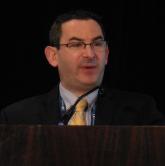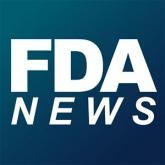Conference Coverage

Thousands expected to get CAR T-cells by 2018
Kite Pharma has a Los Angeles–area facility capable of processing T-cell specimens from 4,000 to 5,000 patients a year, according to Christine...
Efforts to address the cost concerns, including proposals for novel payment strategies, are already emerging. One example involves an offer by Novartis to charge for Kymriah only if treated patients go into remission within 1 month. Details of the plan haven’t been released.
Another approach is being considered in Europe and involves a graduated payment system for an investigational regulatory T cell therapy for autoimmune disease, Dr. Maziarz said. For example, if the drug costs $1 million, the government might pay $200,000 the first year and then $100,000 per year if the patient is cured. “If the patient relapses, they can stop their payment, as cure was not achieved,” he explained.
In many discussions about value, the definition is based on quality-adjusted life years (QALY) gained, he said. A recent statement from the American College of Cardiology and the American Heart Association on cost/value methodology, for example, used $50,000 per QALY gained as the cut-off for a good investment. Costs of $50,000 to less than $150,000 per QALY were considered to be of intermediate value, and costs of $150,000 or greater per QALY gained were considered to be of low value.
“A number of payers are using these guidelines to determine what drugs they will put on their portfolio and make available to enrollees,” Dr. Maziarz said.
In anticipation of cost-related issues with CAR T-cell therapy, the Institute for Clinical and Economic Review (ICER) and its California Technology Assessment Forum (CTAP) put out a request for information and input regarding their intent to collaboratively initiate an assessment of CAR T-cell effectiveness and value, he said.
In the meantime, Dr. Maziarz said that most private insurers he’s been in contact with are planning coverage of CAR T-cell therapy but are working out the details of how to do it.
“It’s typically going to involve very, very strict guidelines for the patients who go on therapy – it’s not going to be a liberal use of the product. It will involve strict adherence to the label,” he said.
The real challenge, however, will be in the Medicare and Medicaid programs, because of the current nature of the reimbursement structures and lack of clear procedural codes to define the effort and cost of care associated with the application of these novel cell therapies.
Walid F. Gellad, MD, and Aaron S. Kesselheim, MD, anticipated some of these challenges in light of accelerated approval processes for expensive drugs and proposed in a May 2017 paper that government payers reimburse only the cost of manufacturing and some predetermined mark-up for such drugs until confirmatory trials demonstrate clinical benefit (N Engl J Med. 2017;376[21]:2001-04).
“Both Yescarta and Kymriah are approved with very, very, very limited data – 100 patients, 80 patients. They absolutely look promising. I was part of those studies, so I’m a believer, but the classic approach to determining success in the medical community is a randomized controlled trial,” Dr. Maziarz said.
The proposal by Dr. Gellad and Dr. Kesselheim acknowledged this, and said perhaps full payment isn’t warranted while the drugs remain in development and until they are proven to be a good investment.
Their proposal also calls for an economic impact analysis after 1-2 years on the market for all accelerated-approval pathway drugs that cost over a predetermined amount, timely and optimally designed confirmatory trials following accelerated approval to limit the period of uncertainty about the true clinical effect of the drug, and additional price concessions to public insurance programs for such drugs until the confirmatory trials are completed. Under this proposal, the unpaid portion of drug costs would be held in escrow until the drug’s efficacy is confirmed.
“I think what’s going to happen is that, as prices and costs go up for any therapy, that backlash will occur. These types of proposals to create solutions will come not from individual companies, but from the government,” Dr. Maziarz said. “I’m 100% excited about the work. I’m extremely excited to be part of the explorations. … I just still think we have to at least try to be aware and cognizant of the issues that we’ll be facing.”
Dr. Maziarz has received consulting fees from Novartis, Juno Therapeutics, and Kite Pharma. Dr. Heslop has received consulting fees from Novartis, has conducted research for Cell Medica and holds intellectual property rights/patent from Cell Medica, and has ownership interest in ViraCyte and Marker Therapeutics. Dr. June received royalties from Novartis, has conducted research for Novartis, and has ownership interest in Tmunity Therapeutics.

Kite Pharma has a Los Angeles–area facility capable of processing T-cell specimens from 4,000 to 5,000 patients a year, according to Christine...

Axicabtagene ciloleucel is the first CAR-T therapy to be approved for use in adults
